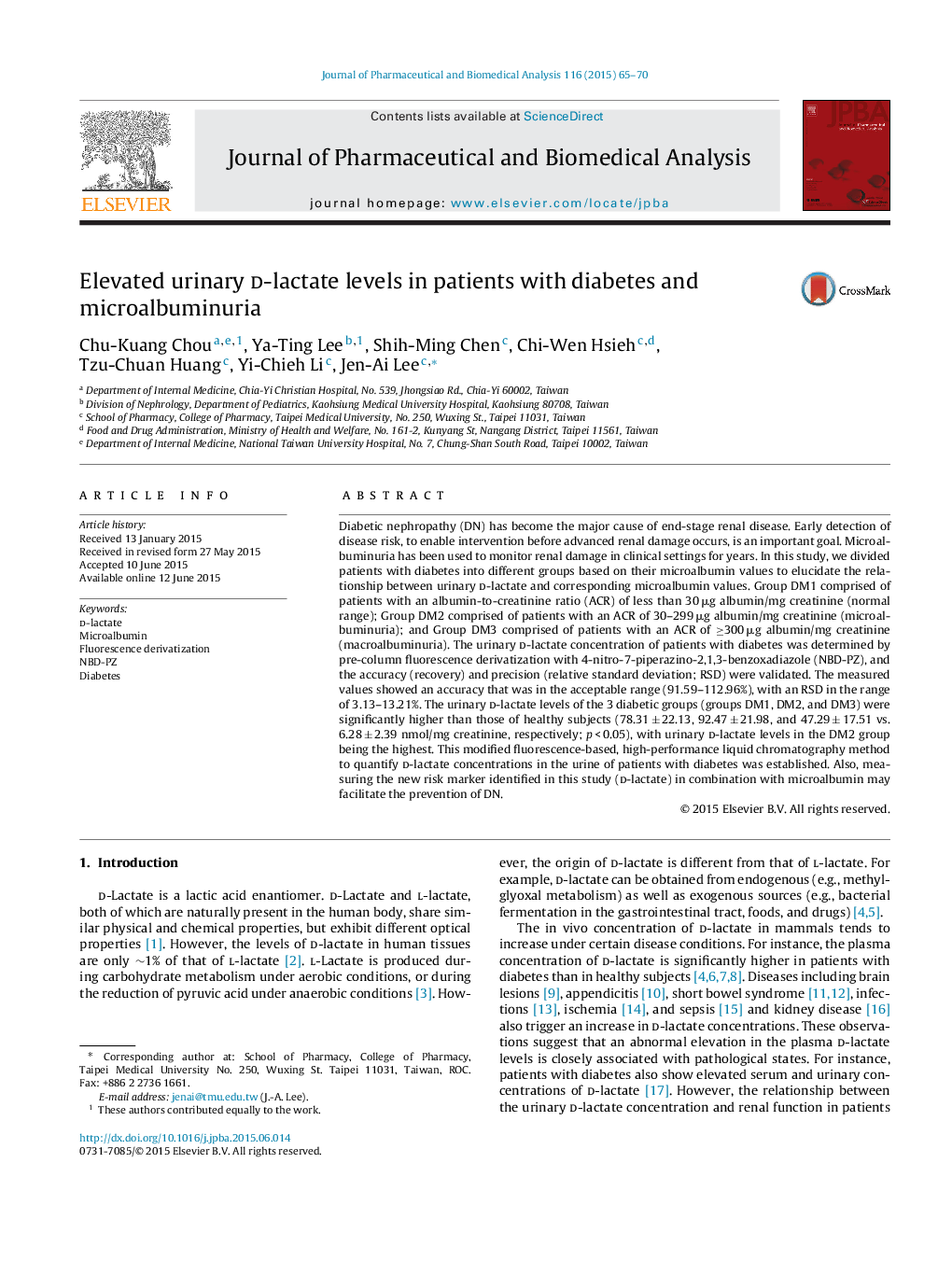| کد مقاله | کد نشریه | سال انتشار | مقاله انگلیسی | نسخه تمام متن |
|---|---|---|---|---|
| 1220476 | 1494619 | 2015 | 6 صفحه PDF | دانلود رایگان |

• A fluorescence HPLC method was used to quantify the urinary d-lactate in patients.
• The accuracy and precision were between 91.59 and 112.96% and 3.13–13.21%.
• We divided diabetic patients into 3 groups based on their microalbuminuria.
• d-lactate level was highest in the urine with 30–299 μg microalbumin/mg creatinine.
• d-lactate combines with microalbumin can be a new risk marker of diabetic nephropathy.
Diabetic nephropathy (DN) has become the major cause of end-stage renal disease. Early detection of disease risk, to enable intervention before advanced renal damage occurs, is an important goal. Microalbuminuria has been used to monitor renal damage in clinical settings for years. In this study, we divided patients with diabetes into different groups based on their microalbumin values to elucidate the relationship between urinary d-lactate and corresponding microalbumin values. Group DM1 comprised of patients with an albumin-to-creatinine ratio (ACR) of less than 30 μg albumin/mg creatinine (normal range); Group DM2 comprised of patients with an ACR of 30–299 μg albumin/mg creatinine (microalbuminuria); and Group DM3 comprised of patients with an ACR of ≥300 μg albumin/mg creatinine (macroalbuminuria). The urinary d-lactate concentration of patients with diabetes was determined by pre-column fluorescence derivatization with 4-nitro-7-piperazino-2,1,3-benzoxadiazole (NBD-PZ), and the accuracy (recovery) and precision (relative standard deviation; RSD) were validated. The measured values showed an accuracy that was in the acceptable range (91.59–112.96%), with an RSD in the range of 3.13–13.21%. The urinary d-lactate levels of the 3 diabetic groups (groups DM1, DM2, and DM3) were significantly higher than those of healthy subjects (78.31 ± 22.13, 92.47 ± 21.98, and 47.29 ± 17.51 vs. 6.28 ± 2.39 nmol/mg creatinine, respectively; p < 0.05), with urinary d-lactate levels in the DM2 group being the highest. This modified fluorescence-based, high-performance liquid chromatography method to quantify d-lactate concentrations in the urine of patients with diabetes was established. Also, measuring the new risk marker identified in this study (d-lactate) in combination with microalbumin may facilitate the prevention of DN.
Figure optionsDownload as PowerPoint slide
Journal: Journal of Pharmaceutical and Biomedical Analysis - Volume 116, 10 December 2015, Pages 65–70